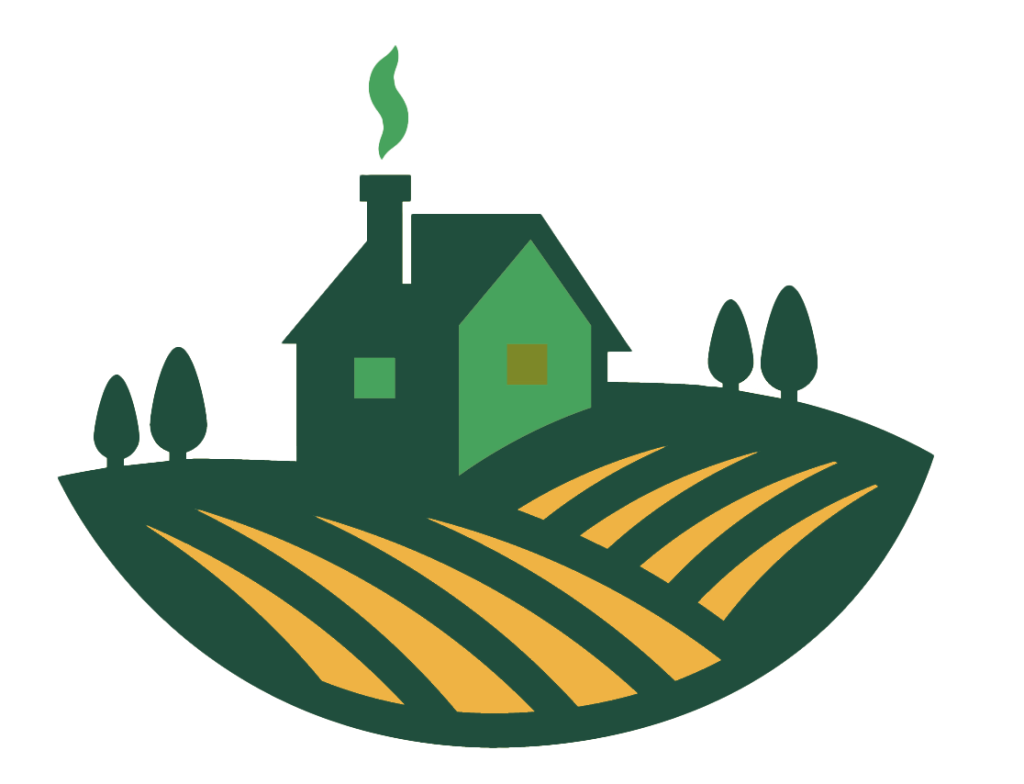
As a gardener who wants to protect both my crops and the environment, I’ve discovered the powerful benefits of eco-friendly pest control techniques. It’s ironic how the solutions to pesky pests can actually be found in nature itself. By embracing companion planting, encouraging natural predators, and utilizing organic pesticides, I’ve been able to create a harmonious and thriving garden. In this article, I will share with you these practical and effective techniques for organic gardening, ensuring a green and pest-free paradise.
Companion Planting
Companion planting enhances organic gardening by pairing specific plant combinations to naturally repel pests. This practice takes advantage of the natural properties of certain plants to create a more balanced and pest-resistant garden ecosystem. When certain plants are grown together, they can provide mutual benefits, such as repelling harmful insects or attracting beneficial ones. For example, planting marigolds alongside tomatoes can deter nematodes, while planting basil near tomatoes can improve their flavor. Another way to protect plants from pests is by using floating row covers. These lightweight fabric covers can be placed directly over the plants, creating a physical barrier that keeps pests out while allowing sunlight, air, and water to reach the plants. By combining companion planting with floating row covers, organic gardeners can effectively control pests while maintaining a healthy and productive garden.
Natural Predators
To further enhance the effectiveness of eco-friendly pest control techniques in organic gardening, I rely on the natural predators present in my garden ecosystem. These natural predators play a crucial role in maintaining a balanced and healthy garden by preying on pests that can harm my plants. For instance, ladybugs are voracious eaters of aphids, a common garden pest. They help to keep the aphid population in check, preventing them from damaging my plants. Another natural predator that I welcome into my garden is the praying mantis. These insects feed on a variety of pests, including caterpillars, flies, and grasshoppers. By attracting and providing a habitat for these natural predators, I can reduce the need for chemical pesticides and maintain a thriving, pest-free garden.
In addition to attracting natural predators, I also utilize composting and organic fertilizers in my garden. Composting benefits not only the soil but also the overall health of my plants. It enriches the soil with nutrients and improves its structure, making it more resistant to pests and diseases. Organic fertilizers, such as bone meal and fish emulsion, provide essential nutrients to my plants without introducing harmful chemicals into the garden ecosystem. These natural fertilizers promote healthy plant growth, making them more resilient to pest attacks. By combining the use of natural predators with composting and organic fertilizers, I can effectively control pests in an eco-friendly and sustainable manner.
Organic Pesticides
I rely on organic pesticides to effectively control pests in my garden without harming the environment. Organic insecticides are an important tool in organic gardening as they are derived from natural sources and have minimal impact on the ecosystem. These pest control products are made from plant-based ingredients such as neem oil, pyrethrum, and garlic, which have been shown to be effective against a wide range of garden pests. Organic insecticides work by disrupting the pests’ nervous systems or by interfering with their ability to feed or reproduce. It is important to note that organic pesticides should still be used sparingly and only when necessary, as they can also harm beneficial insects and other organisms in the garden. Therefore, it is crucial to carefully follow the instructions on the product label and practice integrated pest management strategies to maintain a healthy and balanced garden ecosystem.
Mulching
Mulching is a crucial technique in organic gardening that offers numerous benefits. By applying a layer of organic materials such as straw, leaves, or wood chips to the soil surface, mulching helps to conserve moisture, suppress weeds, and regulate soil temperature. Different types of mulching materials can be used, depending on the specific needs of the garden, including compost, grass clippings, or even newspaper.
Benefits of Mulching
One beneficial aspect of mulching is its ability to retain moisture in the soil. Mulching benefits the garden by acting as a protective layer that helps to prevent water evaporation. This is particularly important in dry or arid climates where water conservation is crucial. Mulching techniques such as using organic materials like straw, wood chips, or compost can enhance the water-holding capacity of the soil. In addition to retaining moisture, mulch also helps to suppress weed growth, regulate soil temperature, and prevent soil erosion. By creating a barrier between the soil and the atmosphere, mulching can reduce the need for frequent watering, conserve water resources, and promote healthier plant growth. Proper mulching techniques can significantly contribute to the overall success of organic gardening.
Types of Mulching Materials
To explore the various options for mulching materials, we can consider different types of organic substances that are commonly used in gardening. Mulching is an essential practice in organic gardening as it helps retain moisture in the soil, suppresses weed growth, and improves soil fertility. One popular mulching material is compost, which is made by decomposing organic matter such as kitchen scraps, grass clippings, and leaves. Composting techniques involve creating a controlled environment where microorganisms break down the organic materials into nutrient-rich compost. Another option is straw, which is effective in preventing weed growth while allowing water and air to reach the soil. Wood chips and bark mulch are also commonly used for their ability to control weeds and improve soil structure. When choosing mulching materials, it is important to consider their organic weed control properties and their ability to break down over time, enriching the soil with nutrients.
Crop Rotation
I rotate my crops annually to naturally control pests and maintain soil health in my organic garden. Crop rotation is a simple yet effective technique that involves planting different crops in a specific sequence on the same piece of land each year. Here are four reasons why crop rotation is beneficial for both pest control and soil health:
-
Pest control: By rotating crops, I disrupt the life cycles of pests and reduce their population. Different crops attract different pests, so rotating crops makes it harder for pests to establish themselves.
-
Disease prevention: Crop rotation helps prevent the buildup of soil-borne diseases that can affect specific plant species. By rotating crops, I reduce the risk of disease transmission and protect the overall health of my garden.
-
Nutrient management: Different crops have different nutrient requirements. By rotating crops, I ensure that the soil is not depleted of specific nutrients and maintain its overall fertility.
-
Weed suppression: Crop rotation can also help suppress weeds. Some crops naturally inhibit the growth of certain weed species, making it easier to control weed populations.
Mechanical Barriers
Continuing with crop rotation, implementing mechanical barriers is another effective technique for eco-friendly pest control in organic gardening. Pest exclusion is a key principle in organic gardening, and employing pest barriers can help achieve this goal. Mechanical barriers are physical structures or materials that prevent pests from accessing plants or garden beds. Common examples include fences, nets, and row covers. These barriers physically block pests such as insects, birds, and small animals from reaching the plants, reducing the chances of damage or infestation. By excluding pests, organic gardeners can minimize the need for chemical pesticides and promote a healthier, more natural gardening environment. When selecting and installing mechanical barriers, it is important to choose materials that are durable, properly sized, and compatible with the specific pest challenges faced in the garden. Regular monitoring and maintenance of the barriers are also necessary to ensure their continued effectiveness.
Trap Crops
One effective technique for eco-friendly pest control in organic gardening is through the use of trap crops. Trap crops are specific plants that are strategically planted to attract and trap pests, diverting them away from the main crop. Here are four reasons why trap crops are a valuable tool in organic gardening:
- Natural pest control: By using trap crops, you can naturally control pests without relying on harmful chemicals.
- Species-specific: Trap crops can be chosen to target specific pests, effectively reducing their population.
- Cost-effective: Trap crops are a cost-effective solution compared to other pest control methods.
- Complementary with floating row covers: Pairing trap crops with floating row covers can enhance their effectiveness by creating a physical barrier that prevents pests from reaching the main crop.
Beneficial Insects
By incorporating trap crops into my organic gardening practices and combining them with floating row covers, I have found that beneficial insects play a crucial role in natural pest control. Beneficial insects are those that prey on or parasitize harmful insects, helping to keep their populations in check. Ladybugs, lacewings, and parasitic wasps are examples of beneficial insects that can be attracted to the garden by providing them with shelter and food sources. Another way to enhance the presence of beneficial insects is by using beneficial nematodes, which are microscopic worms that attack pests in the soil. Additionally, insecticidal soap can be used to control soft-bodied insects without harming beneficial insects. By encouraging the presence of these helpful creatures, organic gardeners can reduce the need for chemical pesticides and promote a healthier and more balanced ecosystem in their gardens.
Essential Oils
I use essential oils as an effective eco-friendly pest control technique in my organic gardening practices. Essential oils offer a natural alternative to chemical pesticides, providing a safe and non-toxic solution for controlling pests. Here are four reasons why essential oils are a valuable addition to any organic garden:
-
Aromatherapy benefits: Essential oils not only repel pests but also provide aromatherapy benefits for humans. Lavender oil, for example, can help promote relaxation and reduce stress while keeping pests away.
-
DIY essential oil blends: By creating your own essential oil blends, you have control over the ingredients and can tailor them to target specific pests. For instance, a mixture of peppermint and eucalyptus oils can deter ants and spiders.
-
Environmentally friendly: Essential oils do not harm beneficial insects, such as bees and ladybugs, ensuring a balanced ecosystem in your garden.
-
Cost-effective: Compared to commercial pesticides, essential oils are often more affordable and readily available, making them a budget-friendly option for pest control.
Incorporating essential oils into your organic gardening practices not only helps keep pests at bay but also enhances the overall well-being of your garden.
Neem Oil
Continuing with the eco-friendly pest control techniques for organic gardening, incorporating neem oil into my practices has proven to be highly effective. Neem oil, derived from the seeds of the neem tree, is a natural pesticide that offers a multitude of uses and benefits.
Neem oil acts as an insect repellent, disrupting the feeding and mating patterns of pests, thus reducing their population. It is effective against a wide range of garden pests, including aphids, mites, whiteflies, and caterpillars. Additionally, neem oil has antifungal properties, making it an excellent solution for preventing and treating fungal diseases like powdery mildew and black spot.
To give you a clearer picture, here is a table outlining some of the uses and benefits of neem oil:
| USES | BENEFITS |
|---|---|
| Insect repellent | Controls a wide range of garden pests |
| Antifungal treatment | Prevents and treats fungal diseases |
| Organic fertilizer | Improves soil fertility and plant health |
| Natural pet care | Safely repels fleas, ticks, and mites |
| Skin care | Soothes and nourishes the skin |
Incorporating neem oil into my organic gardening practices has not only provided effective pest control but also contributed to the overall health and vitality of my garden.
Homemade Pest Sprays
For homemade pest sprays, I rely on a simple and effective mixture of ingredients. One of my go-to homemade remedies is a vinegar spray. It is easy to make and highly effective in repelling pests from my organic garden. Here’s how I prepare it:
- Mix equal parts of white vinegar and water in a spray bottle.
- Add a few drops of dish soap to help the spray stick to the plants.
- Shake the bottle well to ensure the ingredients are thoroughly mixed.
- Spray the mixture directly on the affected plants, focusing on the leaves and stems.
The acidity of vinegar creates an unfavorable environment for pests, deterring them from infesting the plants. This homemade vinegar spray is not only eco-friendly but also cost-effective, making it a great option for organic gardeners seeking natural pest control solutions.
Diatomaceous Earth
After preparing my homemade vinegar spray, I turn to another effective eco-friendly pest control technique for organic gardening: diatomaceous earth. Diatomaceous earth is a natural substance made from the fossilized remains of tiny aquatic organisms called diatoms. It is a powdery substance that is highly effective in controlling pests such as ants, fleas, bed bugs, and cockroaches.
| Pros | Cons |
|---|---|
| Safe for humans | Harmful to bees |
| Non-toxic | Can cause respiratory irritation |
| Long-lasting | Not effective when wet |
| Easy to apply | Needs to be reapplied after rain |
| Environmentally friendly | Can be messy |
To use diatomaceous earth, simply sprinkle it around problem areas or directly on the pests themselves. The sharp edges of the diatoms will cut through the pests’ exoskeleton, causing them to dehydrate and die. Remember to wear gloves and a mask when applying diatomaceous earth to avoid skin and respiratory irritation. Overall, diatomaceous earth is a valuable tool in organic gardening techniques and pest control methods.
Garlic and Onion Spray
Now, let’s delve into another effective eco-friendly pest control technique for organic gardening: the use of garlic and onion spray. This homemade pest spray is easy to make and can help protect your plants from a variety of pests. Here are four reasons why garlic and onion spray is a great addition to your organic gardening arsenal:
-
Natural repellent: Garlic and onion have strong odors that repel many garden pests, such as aphids, caterpillars, and beetles.
-
Safe for plants: Unlike chemical pesticides, garlic and onion spray is safe to use on edible plants without leaving harmful residues.
-
Easy to make: Simply blend garlic cloves and onion bulbs with water, strain the mixture, and dilute it before spraying it on your plants.
-
Cost-effective: Making your own garlic and onion spray is much cheaper than buying commercial pest control products.
Floating Row Covers
I use floating row covers as an effective eco-friendly pest control technique for my organic garden. Floating row covers are lightweight, permeable fabrics that are placed directly over the crops, creating a physical barrier between the plants and insects. These covers help to keep pests such as aphids, caterpillars, and flea beetles away from my plants, reducing the need for chemical pesticides.
The use of floating row covers is particularly beneficial when combined with crop rotation. By rotating the crops each season, pests that may have overwintered in the soil are disrupted and their populations are minimized. This integrated approach helps to maintain a healthy balance in the garden ecosystem, promoting beneficial insects and deterring harmful ones.
Floating row covers are easy to install and remove, making them a practical choice for organic gardeners. They also provide some protection against adverse weather conditions and can extend the growing season by providing a microclimate for the plants. Overall, floating row covers are an essential tool in my organic gardening arsenal, helping me maintain a pest-free and sustainable garden.
Soil Amendments
When it comes to eco-friendly pest control in organic gardening, soil amendments play a crucial role. Natural pest repellents, such as neem oil and garlic spray, can be incorporated into the soil to deter pests. Additionally, composting is a great way to improve soil health, as it adds essential nutrients and beneficial microbes that help plants thrive and resist pests. By utilizing these soil amendments, organic gardeners can create a healthy and pest-resistant environment for their plants.
Natural Pest Repellents
Effective pest control in organic gardening can be achieved by utilizing natural pest repellents in the form of soil amendments. These amendments not only help in deterring pests but also improve the overall health of the plants. Here are four natural pest repellents that can be used as soil amendments:
-
Neem: Neem oil is an effective natural insecticide that disrupts the feeding and reproductive cycles of pests, preventing them from causing damage to the plants.
-
Garlic: Garlic has strong antimicrobial and insecticidal properties. It can be incorporated into the soil to repel pests like aphids, beetles, and nematodes.
-
Chrysanthemum: Chrysanthemum flowers contain natural insecticides called pyrethrins. Adding dried chrysanthemum flowers to the soil can help control pests like ants, fleas, and ticks.
-
Eucalyptus: Eucalyptus oil acts as a natural insect repellent. Mixing eucalyptus leaves or oil into the soil can deter pests like mosquitoes and flies.
Composting for Healthy Soil
To continue enhancing the health of plants and deterring pests, organic gardeners can incorporate composting as a key soil amendment technique. Composting is a natural process that involves decomposing organic matter such as kitchen scraps, yard waste, and plant trimmings. By breaking down these materials, composting creates a nutrient-rich substance that can be added to the soil, improving its fertility. There are several composting techniques that gardeners can employ, including aerobic composting, vermicomposting, and hot composting. Each technique has its own benefits and considerations, so it is important to choose the one that suits your specific gardening needs. Regardless of the method, composting can significantly increase soil fertility by providing essential nutrients, improving soil structure, and enhancing moisture retention. By incorporating composting into your gardening practices, you can create a healthy and thriving ecosystem for your plants.


